Wuhan (Day 4 - part 1)
Wuhan, with a population of 8.5 million, is the capital of Hubei Province. It is where the Yangtze River and its longest tributary, the Han River, meet. Due to its scortching summer heat, Wuhan is one of the Three Furnace Cities (Nanjing and Chongqing are the other two).
Its name comes from the three cities that merged to create it in 1927: Wuchang, Hankou and Hanyang.

Wuhan
Because of our late flight last night, the bus didn't pick us up until later in the morning. That gave us a bit of time to explore our hotel, the Wuhan Jin Jiang International Hotel.
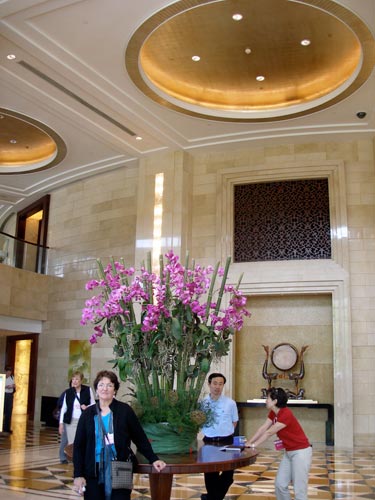
The lobby
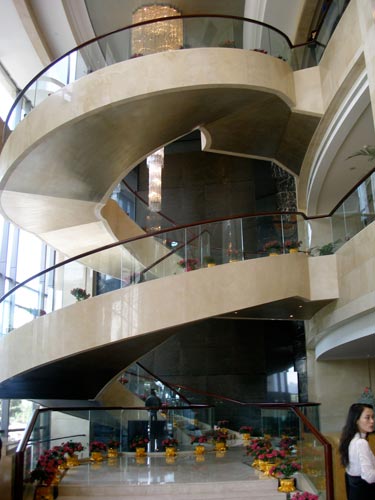
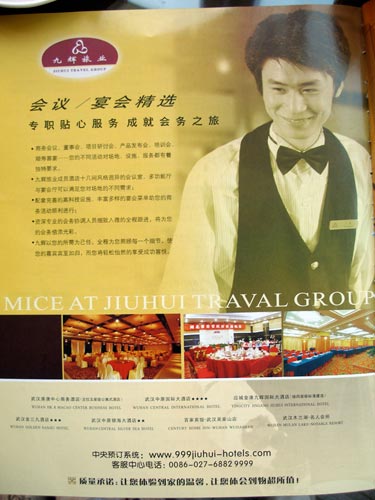
This brochure apparently tells of "Mice at Jiuhuitraval Group."
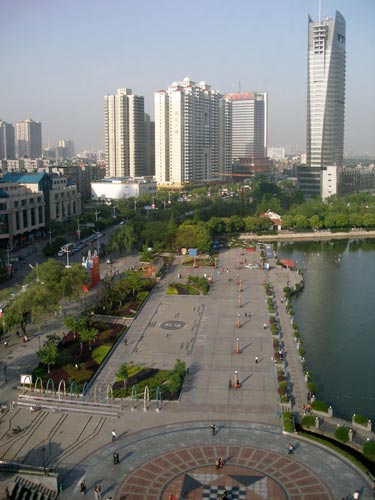
A view from the hotel window

Ballroom dancing is a very popular form of morning exercize.
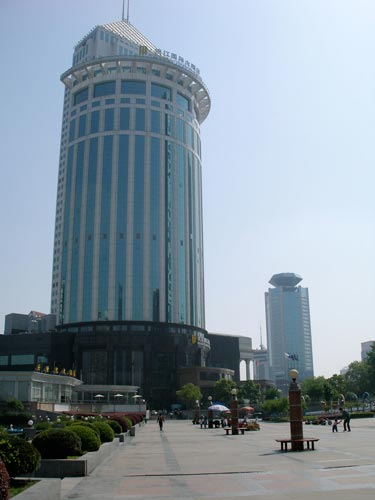
The five-star deluxe hotel is surrounded by three lakes, near West-North Lake Square.
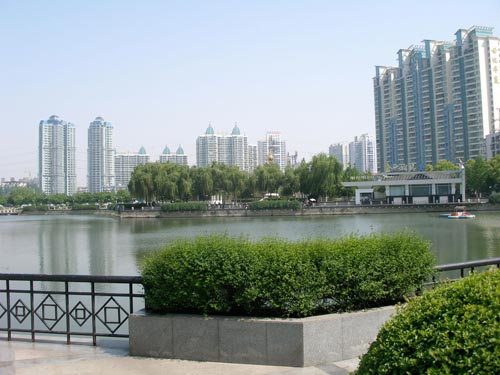
West Lake
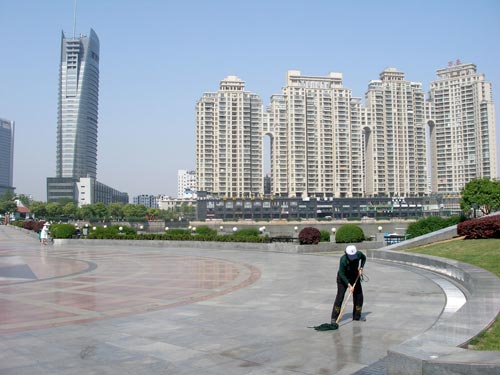
Mopping up after all that dancing
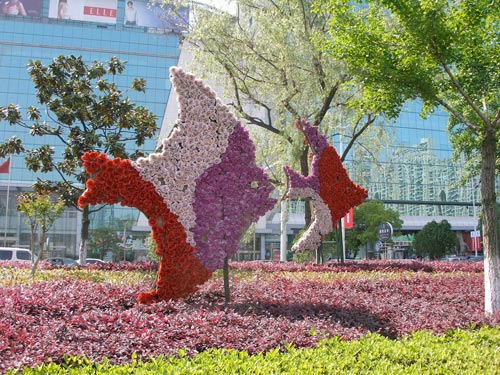
Flower decorations
Our first site of the day was the Hubei Provincial Museum, including a lovely concert performed on the famous Chime Bells. The Hubei Provincial Museum exhibits regional cultural relics. Since 1953, it has collected over 200,000 items discovered in Hubei Province.
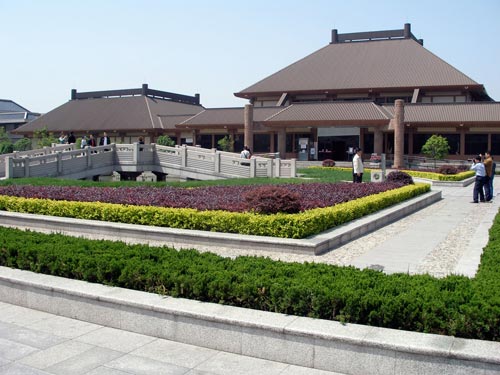
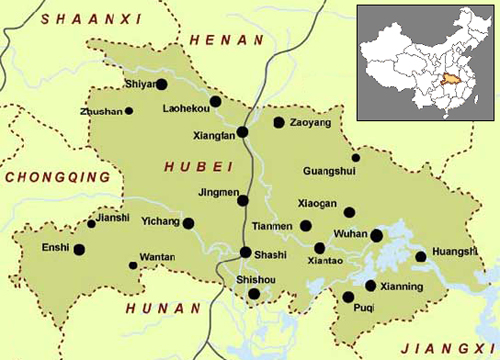
A large part of the museum is dedicated to the 15,000 artifacts excavated from the tomb of Marquis Yi of Zeng (Zeng Hou Yi). Zeng was a minor state subordinate to its powerful neighbor, the Chu state, during the Warring States Period (475 - 221 BC). The tomb was believed to have been built in 433 BC or slightly later. In addition to exquisite bronze vessels, the tomb contained a trove of weaponry, glass, and musical instruments.
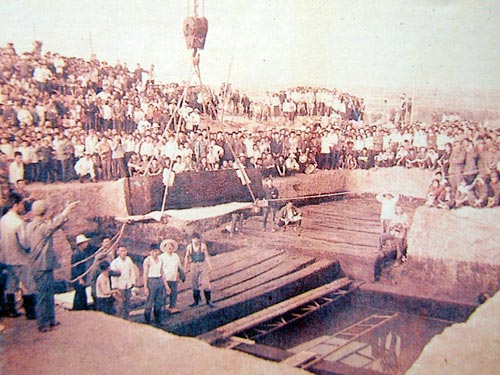
In 1978 on the outskirts to Suizhou City, archeologists discover the tomb. (Picture is from the Unique Music of Great Antiquity CD).
Several models to give visitors an impression of how the Chu people lived.

The ancient Chu capital of Ying, later known as Ji'nancheng, was a prosperous city during the Eastern Zhou period (770 - 221 BC), the height of the Chu culture.
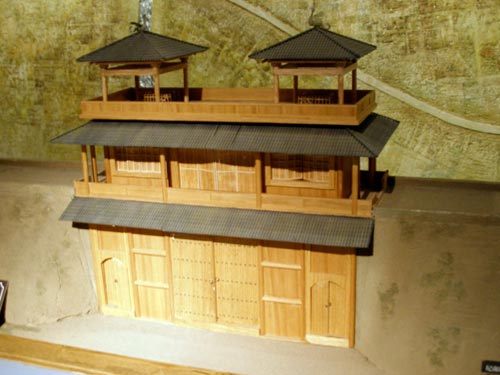
A close-up of a massive city gate

This is how mining was done.
Artifacts:
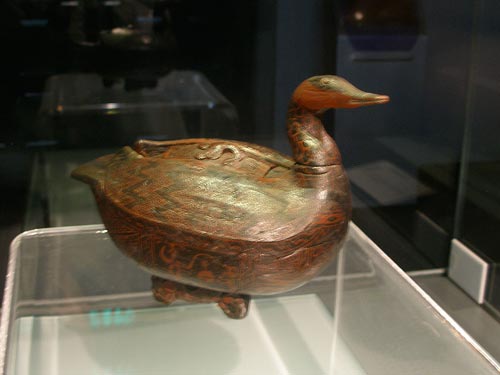
Painted lacquer wooden Mandarin-duck-shaped case. The duck was an article for daily use. It was discovered in one of the accompanying coffins in the western chamber. On both sides of its belly are pictures of dancing and playing the chime bells, stones chimes and drums.
Chinese lacquer is a clear or colored varnish made from tree sap from a tree similar to a maple. Once dry, it forms a hard, durable finish, resistant to water or corrosion. Chinese lacquerware dates as far back as the Neolithic Age (some 7,000 years ago). The original wares were coated with black and red lacquers. Starting in 1600 BC, colorful painting, gold inlaying and other techniques were introduced.
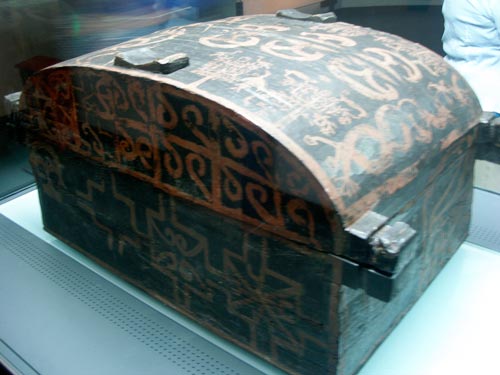
Suitcase with constellations. The box is painted with the 28 constellations into which the celestial sphere was divided in ancient Chinese astronomy.
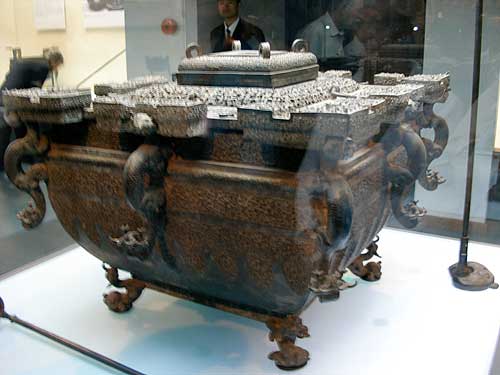
Wine storage vessel (jian) with serving spoons. Wine filled the center of the jian, while ice filled the outer layer... creating a type of cooler.
Wine back then was not as we know it today. The fermented product had a thick creamy consistency and was eaten. Thus the vessels were more or less the same as those used for other food such as bamboo bowls.
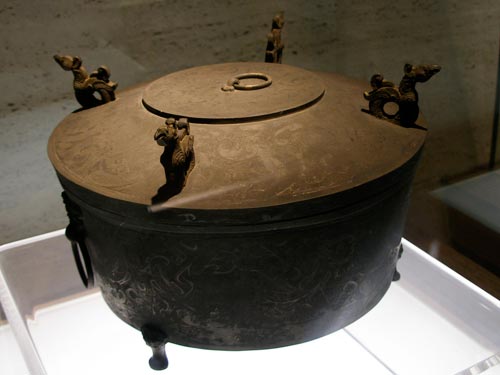
A bronze zun (wine container) with a dragon and phoenix design
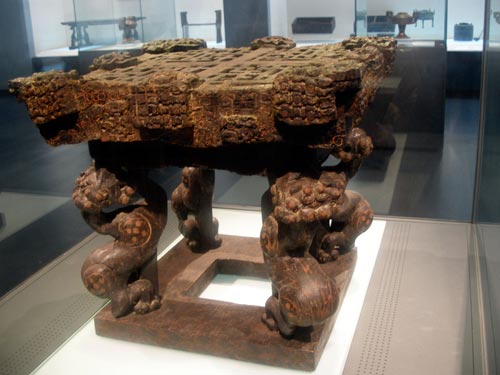
Openwork lacquered stand (jin). A jin was a stand for wine mugs or jars from the Spring and Autumn period (770 - 476 BC). The surface is carved out of a single thick block of wood and is decorated with cloud patterns. There are two dragons in relief on each corner, and the legs are in the shape of beasts.
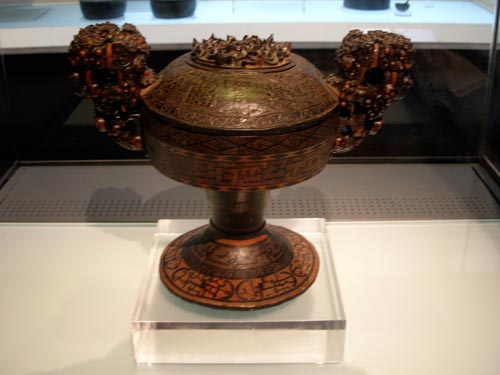
As it was the custom for people to sit on the floor, the vessels tended to be low and chunky, often with ear-like handles. Later, when people liked to sit on a divan or bed, the vessels changed into tall and thin-necked cups.
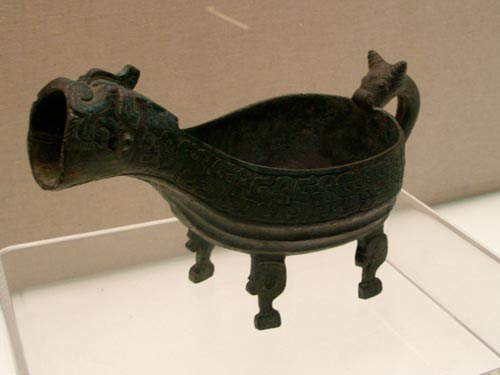
This spouted wine vessel (guang) is in the shape of an animal. The vessels made during this period were probably used in rituals, rather than for everyday functions.
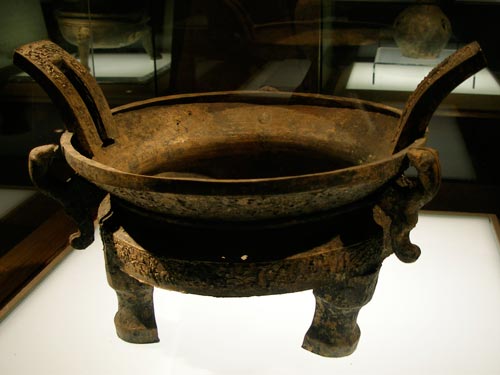
Food vessel (ding or ting). The ding is a ritual food vessel supported by three legs. They were used in temple offerings of food and wine to ancestors and placed in tombs and burial sites to honor the dead.
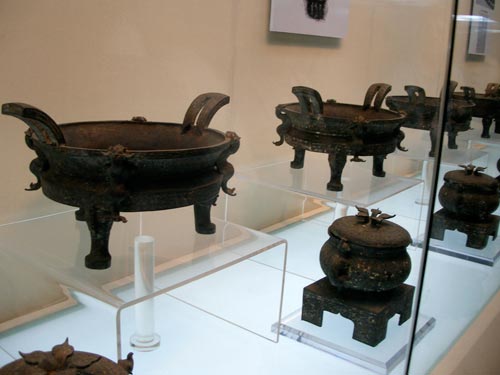

A gold serving vessel and spoon

A dui (or tui) is a globe-like food container.
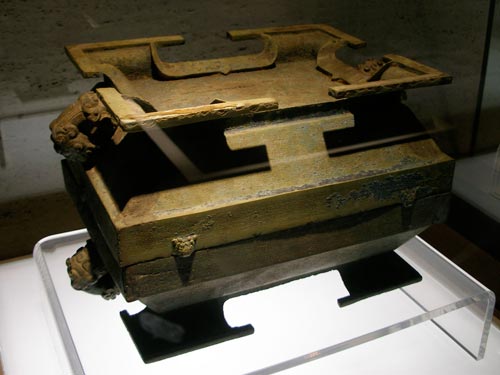
This object is a Fu.
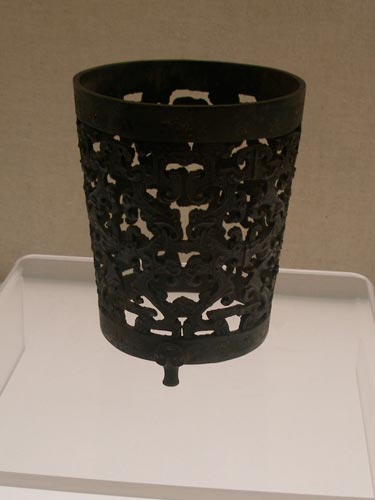
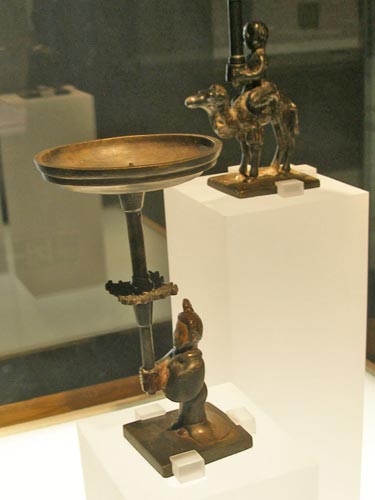
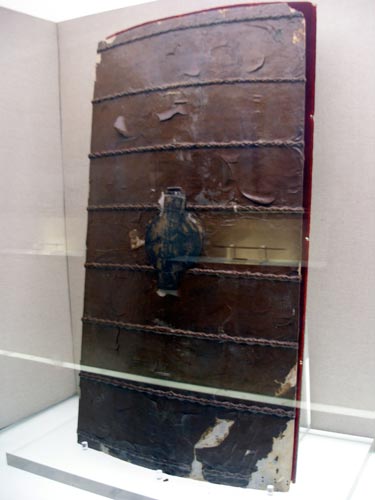
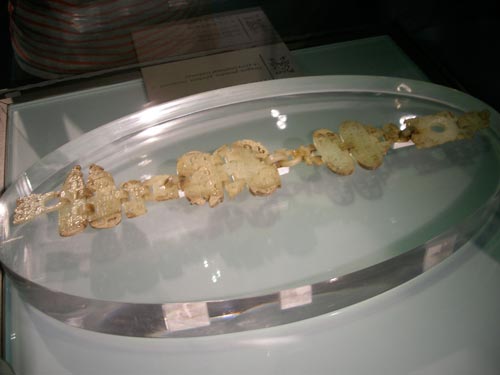
Delicate jewelry
return • continue
|
|

